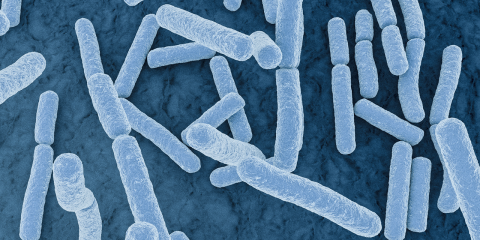About 1500 years before Hippocrates claimed all diseases began from the gut. The medical world has accepted this idea for the last 20-30 years.
Losing your gut health can lead to chronic pain, depression, anxiety, and many other neurological diseases. Michael Gershon first used the term the second brain in 1998, to describe the gut and gut-brain interactions. The main reason for the guts to be called the second brain is that the intestines have their own nervous system and can work independently from the central nervous system. The digestive system has its own nervous system of 500 million nerve cells. Actually it may be called the first brain because it develops before the brain in the womb. The rhythmic cycles of the intestine during the day are similar to the brain cycles in sleep. Many neurotransmitters used in the brain and spinal cord is produced in the intestines.
The most important of these are serotonin, dopamine and BDNF. Changes in these chemicals cause many diseases from depression to dementia. The levels of these chemicals are of great importance in the emergence of chronic pain, migraine and fibromyalgia and severe pain.
Many vitamins and chemicals that are synthesized by bacteria (microbiome-microbiota) that live in intestines are effective on the brain and are used in the communication between neurons.
The digestive system starts from the mouth, and continues with the esophagus, stomach, duodenum, small intestine, large intestine and rectum, ends with the anus. The digestive system is responsible for transporting everything taken orally through the body, digestion, absorption of nutrients, vitamins, minerals and electrolytes, as well as the removal of residual and toxic materials.
The digestive system is a 7-ply and 9-meter pipe very similar to Russian matryoshka dolls. The innermost layer of the digestive system is connected to the outside. There is a barrier of intestinal cells between the external world and the inside of the body. The immune system, which constitutes 80 percent of the entire body's immune system, is found in and around the intestines and is called the Gut associated lymphatic tissue (GALT).
Enterocytes are the single line of intestinal cells covering the intestinal wall and the ones in contact with the external world. You can think of enterocytes as a single-row brick wall. These cells lay the inner wall of the gut like tiles- without any gaps. Enterocytes provide the communication between the external world and the inner world and absorption of molecules from food. Each layer contains nerve cells and immune system cells.
There are tight links that hold the enterocytes together called tight junctions. The fingerlike projections of the enterocytes absorb amino acids, sugars, minerals and vitamins and fat from the nutrients. The projections look like a thick carpet. Other cells that are interspersed with enterocytes are mucin-producing goblet cells and enterochromafine cells that produce serotonin and other chemicals.
Intestinal cells and tight connections absorb nutrients from food and prevent harmful substances from entering our bodies.
The enteric nervous system controls the physiological integrity of the digestive system. It provides communication between the digestive system and the brain. It regulates bowel movements and local blood circulation.
The brain's bowel axis refers to two-way communication between the brain and intestines. The microbiome (intestinal bacteria) also takes part in this communication.
The intestinal nervous system is in constant communication with the central nervous system through the parasympathetic and sympathetic nervous systems.
The brain affects bowel movements, intestinal stress responses, intestinal permeability, and fasting satiety. The intestines affect the brain by regulating intestinal permeability, producing serotonin, dopamine, BDNF and other chemicals. In addition, the vagus nerve forming the backbone of the intestinal axis affects hormones, mood (depression, anxiety) and cognitive processes.
Intestinal bacteria produce B12, other B vitamins and vitamin K which are important for brain health.
The autonomic nervous system is a structure that controls the functions of our internal organs and works 90% involuntarily: the sympathetic nervous system is the one responsible for the fight / response of the stress. The parasympathetic nervous system takes part in sexual arousal, salivation, lacrimation, urination, digestion, and defecation, repair and immune system functioning.
The backbone of the parasympathetic nervous system is the vagus nerve. After parting the brain stem, the vagus nerve passes through the spinal cord and spreads to all internal organs. The name Vagus comes from this feature, Vagus means the vagabond in Latin.
The vagus nervous system provides communication between the brain and the intestine in two directions, it controls swallowing, heart rate, sweating, blood pressure, bowel movements.
When the communication between the brain-intestine-microbiome deteriorates, many diseases come forth: IBS, migraine, fibromyalgia, chronic fatigue syndrome, depression, anxiety disorders are some of the many.
Fingerlike projections on the gut surface absorb what we eat. Nutrients, protein, fat, carbohydrates, vitamins, minerals, antioxidants and Nano molecules are absorbed. Eating Healthy is very important, a proper and healthy absorption is much more important. In fact, you're not what you eat, you are what you can digest and absorb!





